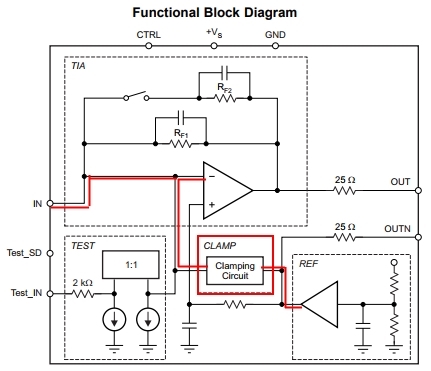Other Parts Discussed in Thread: OPA857, , LMH6629
Hi
What is the clamping circuit of OPA857?
I can see the figure 38 about internal ESD protection.
Is the meaning of clamping circuit is nearly equal to ESD protection circuit?
I just want to confirm if the figure 18 of OPA699 is represented as clamping circuit or not, because there is no description of "Clamping circuit" in OPA699 datasheet.
If yes, as the same reason, I believe that LMH6629 also has clamping circuit (ESD protection circuit).
BestRegards



